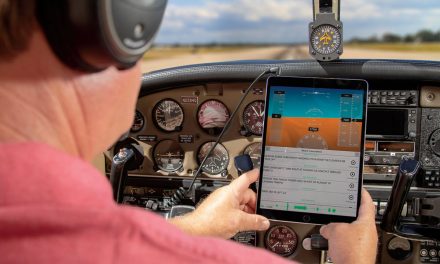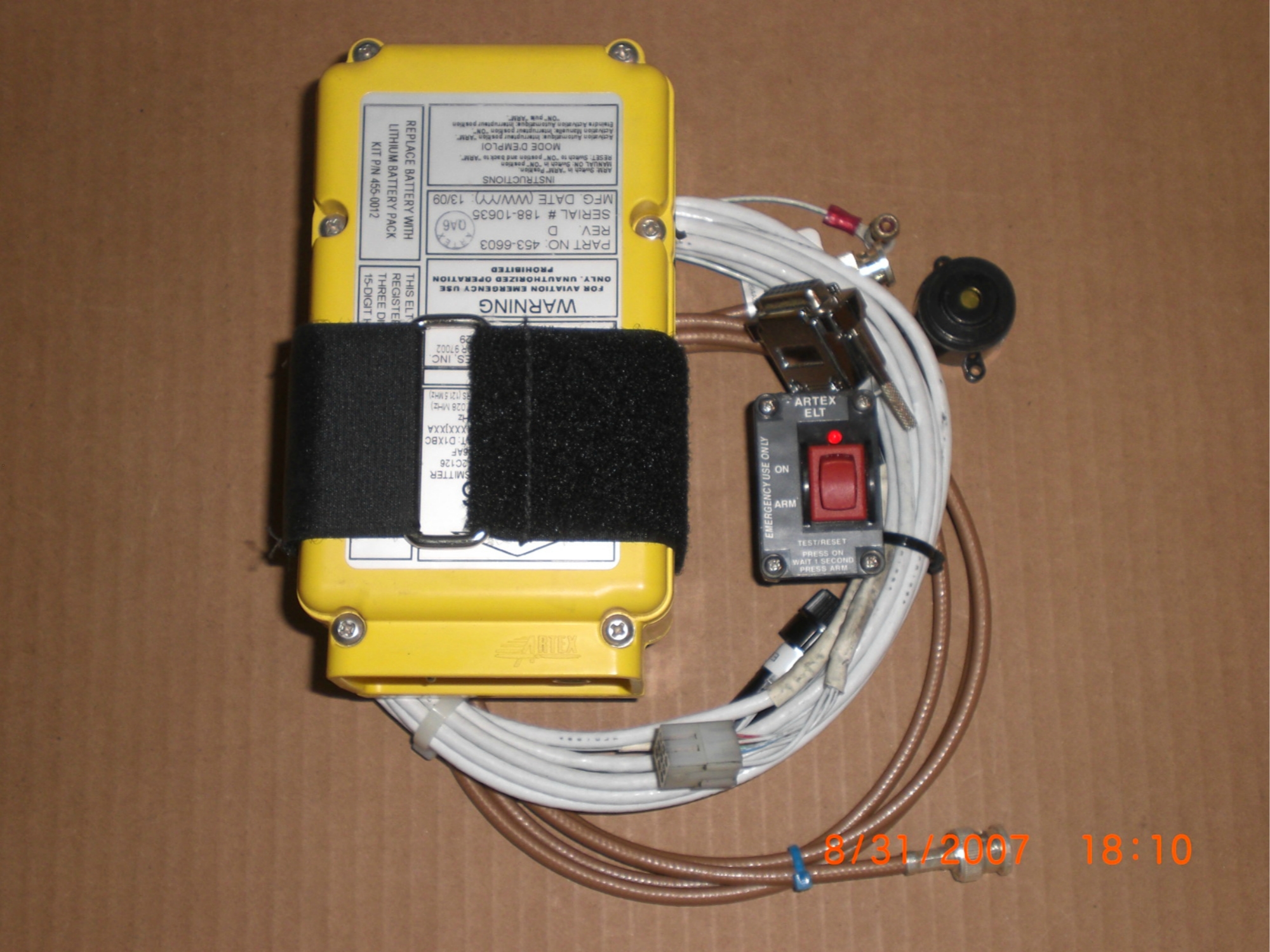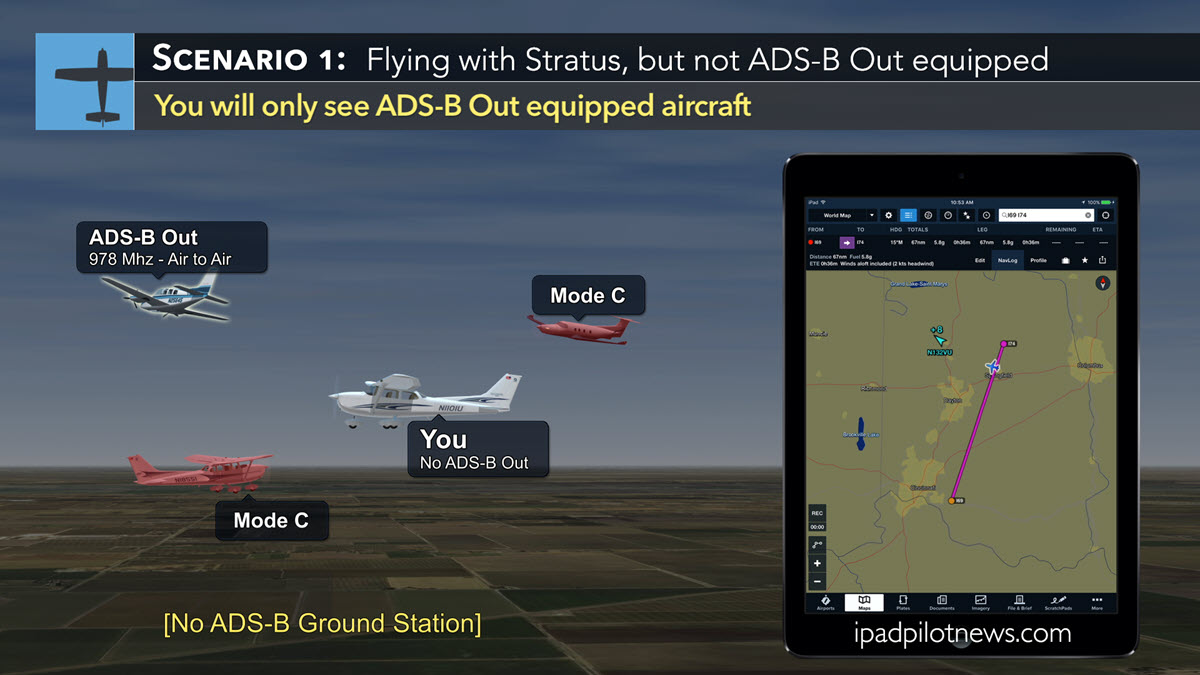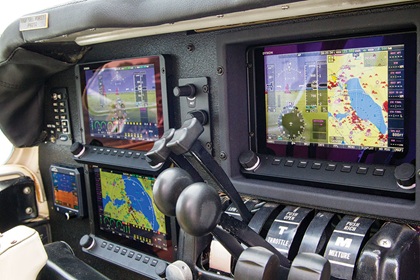Instrument Identification & Application
By Bob Hart – www.AvionixHelp.com
There aren’t many things we pilots take for granted. Before a flight, especially a cross-country, we review the route and make notes, monitor the weather, check fuel, and do a thorough pre-flight of the aircraft. While in flight, we pay attention to our course, watch for traffic, and, hopefully, maintain a reasonable scan of our panel, including the engine instruments. One thing, however, we tend to take for granted is that our little Lycoming or Continental engine will continue to putter along without incident. Throughout my years of flying, I remember only one time when things didn’t go that way.
I was flying a 1947 Stinson 108-2 powered by a 165-hp Franklin engine. The flight was just a 20-minute breakfast hop from Marshfield, MA, to Plymouth, MA. Plymouth Airport not only had a nice restaurant, but there was always a lot of activity there too, including a fairly active sailplane operation. On the return flight, through my normal instrument scan (and thanks to good training) I noticed the oil pressure was dropping. I reasoned that I was less than halfway home, so I did a one eighty and announced on the Plymouth Unicom that I was entering the pattern with a “developing engine problem.” I actually cut the engine on final and turned off the runway onto the grass. I got out and found the airplane coated with engine oil. The oil cooler in the old Stinson had just “let go.” I was lucky, thanks in part to a good instrument scan and a quick decision to return to Plymouth. Had I been in IFR conditions at night or over rough terrain, the outcome may have been very different.
That was 1972. Back then, the average aircraft had Fuel (quantity), Oil Temperature and Pressure gauges, and amp instruments, while some of the better airplanes also had EGT (exhaust gas temp) and sometimes CHT (cylinder head temp). These were normally factory-installed, analog instruments of often questionable accuracy, and the EGT or CHT typically monitored only one cylinder, usually deemed the “hottest.” As you can see, by today’s standards that’s a very underwhelming and incomplete picture of what’s going on under the hood!
Today, the situation is very different and the tools available to the pilot range from the basic analog units of yesterday to sophisticated Engine Management computers that, quite literally, fill the role of flight engineer. Plus, they’re pro-active and ready to “shout” in your ear if something goes awry—likely, way before you’d notice a problem yourself via a normal panel scan.
In this two-part series, we’ll look at the engine awareness options available to today’s GA pilot, from the basic needs of VFR to the sophisticated units that the “hard” IFR guys would want to consider. Let’s begin by taking a closer look at twelve established engine monitoring parameters and their associated instruments. Specifically, what they measure and what they tell us about our engine(s). Please note: I’ve listed these in order of importance as I perceive them. Depending on what (and how) you fly, you may have these in a different order.
- Fuel Pressure (FP): Engines stop turning very quickly when fuel is removed from the equation. This instrument measures pressure in the fuel line, usually between the fuel pump and the carburetor or injectors. FP remains fairly constant at cruise. A change in FP is something you want to know about fast! It could be something as simple as an overdue tank change or something much worse.
- Oil Pressure (OP): Proper lubrication is crucial to engine life and contributes to engine cooling. A total loss of OP will no doubt stop an engine in mid-stream, and changes in OP – either a reduction or an increase – are indicative of a problem. It’s a need-to-know item!
- Manifold Pressure (MP): Generally found only on aircraft with constant speed props or turbo boosting, MP is directly proportional to the power being produced by the engine. The higher the MP, the higher the available hp. A change in MP in cruise means you’re losing power.
- Revolutions Per Minute (RPM): No question, the speed at which the prop and engine turn is basic to flight; however, the instruments above will frequently warn you of a problem before you see a loss of RPM. We use RPM to set climb and cruise power settings. Pilots flying behind constant speed props watch it even more closely in order to monitor the condition of their prop.
- Volts/Amps: Unlike cars, the aircraft engines’ magneto produces the spark necessary to fire the engine. However, the avionics and all other electric functions are part of the electrical system connected to the alternator and battery. A drop in volts or amps means you’re losing the “juice” required to communicate and navigate.
- Exhaust Gas Temperature (EGT): An airplane’s EGT gauge serves multiple functions. First, it tells you that combustion is actually happening. Consider this: a spinning propeller, even without combustion, will produce a reading of RPM, manifold pressure, and oil pressure. But, with no combustion, the EGT will drop like a lead balloon—no fire, no heat, no EGT reading. What’s interesting about EGT is that it’s not so much about the temperature of that individual cylinder as it is about the relative temperature compared to the other cylinders. EGT will fluctuate depending on the power setting, etc., but it should remain relatively consistent with the other cylinders. Of course, the most popular feature of the EGT instrument is its ability to help a pilot maximize fuel efficiency by correctly leaning the engine or tuning the chemical mixture (fuel and oxygen) to its maximum efficiency. This has become a very significant issue in 2014 and the place where a good, multi-cylinder engine monitor can earn its place in your panel.
- Cylinder Head Temperature (CHT): This instrument, unlike the EGT, is fairly slow to respond and, again, measures the relative temperature between the cylinders. An increase in a single cylinder is indicative of increasing wear or a problem with engine baffling and incorrect cooling. It’s probably safe to say, as pilots, we’re a bit “baffled” by engine cooling issues – especially baffling – and we wouldn’t know what to look for under the hood when we do our pre-flights. This is what the CHT does. It points to a potential cylinder problem and “suggests” we look into it before it becomes a real issue in flight.
- Turbine Inlet Temperature (TIT): A normally-aspirated aircraft engine produces maximum power at sea level and loses power as altitude increases, ultimately limiting the service ceiling of an aircraft. Turbo-charged aircraft overcome this issue with the addition of a turbocharger that artificially boosts manifold pressure and is fed by the aircraft’s exhaust. The TIT gauge measures the temperature of the air entering the turbine. Not only is this a tool for turbine jockeys to monitor the inlet temperature and the condition of the turbine components, but it can also be used as a leaning tool. These are standard equipment on turbo-assisted aircraft. Frankly, flying turbo-charged airplanes, managing that additional power and dissecting the role of TIT is an article in itself; and, sorry, I’m not the guy to teach that class!
- Fuel Flow (FF): Only the better aircraft received FF gauges from the factory, though it has become an attractive and affordable option. Your aircraft engine will typically use a given number of gallons per hour at similar power settings and altitudes. Call this a baseline. If, all of a sudden, you’re using a lot more fuel, you obviously have a problem. The most serious problem that comes to mind is a fuel leak on the pressure side of the fuel line (between the pump and carb or fuel injection). This means you may be dumping fuel into your engine compartment – your hot engine compartment – not good! The other nice thing about a FF gauge is that you can immediately see the rewards of leaning in the form of reduced fuel consumption. FF gauges were basic in the past, but GPS and the ability to interface the two, have taken it to the next level. Now, with this interface on board, you see current FF and, with the push of a few buttons, you know how much fuel you will need to get to your destination, how much you will have left once you get there, etc. The FF gauge has now become a great planning tool for long VFR and IFR flights.
- Carburetor Temperature (CT): First, an interesting factoid about carb ice: Cessna aircraft seem to be more susceptible to carb icing than Pipers. One theory is that Pipers are more tightly cowled. Personally, I’ve flown mostly Pipers and have never experienced carb icing; nor, have I had a CT gauge installed in my aircraft. So, to best describe the role of this instrument, I did some research. Simply stated, a probe installed in the carburetor monitors the air temperature which, by the way, has little to do with the outside air temperature. Air temperature drops, often severely, as it passes through the carburetor venturi and with the presence of moisture in the air, carb ice forms, robbing engine power and catching you off-guard. I was surprised to discover that the conditions for carb ice formation are almost always present and can strike even at full-throttle during takeoff mode. From 2000-2011, roughly 250 aircraft accidents have been attributed to carb ice. If it weren’t for the relatively low accident numbers, I might be inclined to move this instrument higher on the priority list.
- Oil Temperature (OT): According to the oil industry, analog OT gauges installed in GA aircraft are frequently inaccurate. Yet, aircraft and engine manufacturers tell us not to take off until engine oil reaches a recommended temperature. This is, of course, applies more to an aircraft with a constant-speed prop or for turbocharged engines where cold engine oil can have a more significant negative effect. Where the OT gauge becomes more important is when something is going wrong. Ironically, this is often a result of pilot error, like taking off with engine intake plugs or forgetting to check/top-off engine oil. Conversely, when the problem is the result of a failure in the engine, the OT, in conjunction with the oil pressure gauge, helps determine the source of the problem in flight. Bottom line: high or low OT and low oil pressure is reason to get on the ground, FAST!
- Outside Air Temperature (OAT): Surprisingly, OAT has less to do with carb ice than you’d think. It does, however, play a significant role in detecting the formation of rime ice on the airframe and in determining certain aspects of aircraft performance, like takeoff performance and density altitude. Most of us are used to the probe through the windshield. These work, but can be a little hard on windscreens. Today, we’re seeing more aircraft with digital OAT gauges, either singular or as a part of a more sophisticated engine monitor. It’s reasonable to suggest that the digital gauges are easier to read and probably a little more accurate. As a result, the OAT gauge has evolved from a “so what” instrument to more of a “must have” tool for an IFR pilot in known icing conditions. Years ago, I was driving my Audi on a wet winter morning in Vermont. The car happened to be equipped with an OAT display that showed the temperature was right around freezing. Within minutes, the temperature dropped a few degrees and the roads instantly turned to solid ice. I sat at the bottom of a hill and watched the “show” as unsuspecting drivers made their attempts. This can happen just as fast in an airplane, but with far more serious consequences. Funny, how an instrument that we frequently take for granted can, at times, become the most important!
That pretty much sums up the engine parameters that we would most likely see in a typical GA single or twin aircraft. Turbo-props and jets are another story, but we won’t address them here.
As you can see, the day of trusting your engine to an EGT gauge that monitors only one cylinder is gone (or should be) for most. Today, pilots concerned about engine awareness will find affordable, “advisory” engine analyzers that monitor all cylinders, deliver a better overall picture of engine condition, and provide a good learning tool to safely conserve fuel. For pilots who spend more time in IFR conditions and thus, at greater risk, sophisticated Engine Management Systems (EMSs) from makers like JP Instruments (www.jpinstruments.com), Electronics International (www.buy-ei.com), and now, Ultra Electronics/Flightline Systems (www.ultra-auracle.com) are readily available. These high-end EMSs serve as “primary” replacements for factory-installed engine gauges and monitor virtually everything. Ultra offers both single-engine (CRM2100) and twin (CRM2120) versions of their AuRACLE engine management systems that alert pilots to critical engine conditions including fuel data, exhaust gas temperature, and cylinder head temperature.
In Part Two, we’ll take a closer look at these and other manufacturers who provide “advisory” engine monitors and those who offer “primary” engine management units for today’s GA pilots. If you followed my four-part series on panels (VFR through Business Flying), you understand that how you fly dictates what you need (or should have) on-board. This is also true of engine management. If you’ve ever blown an oil cooler in flight or bumped a mag switch at 11,000 feet over the Rockies, you know that feeling in your gut when the little Lycoming, Continental (or Franklin) starts to hiccup. The fact is airplane engines are very reliable, but they’re not perfect. When they’re not, it’s good to know as soon as possible!
As always, if you have any questions or comments, you’ll find me on the Cessna and Piper Owner forums. Till then, Fly Safe and have Fun!
The 13th Parameter: (Not so) “Good Vibrations”
In this article, I identified 12 parameters of GA aircraft engine management, but one manufacturer recently addressed a 13th—vibration. Actually, vibration has always been a parameter and a major concern in flight. As pilots, it’s something we “feel” in our gut and, frankly, it scares the hell out of us!
In the summer of 1987, I did something I always wanted to do. I was between jobs, had a few bucks in the bank, and had a Cherokee Six at my disposal. I’d always wanted to solo across the U.S., camp under the wing of the plane and, essentially, “see the USA in my Chevrolet,” so to speak. Actually, I invited the wife to go, but she thought I was nuts! I planned out the whole trip and traveled across the country along the upper states where it would be cooler. This, of course, included the leg I dreaded most—100 miles of pure Rocky Mountains from Missoula, Montana, to Walla Walla, Washington.
Cruising at 11,000 ft. and about 1000 ft. above the peaks, I was constantly looking for a place to put down if I had to—that’s just good pilotage. As fate would have it, that’s when my bladder reported in. So equipped, I pushed my seat back and proceeded with the maneuver. At that exact moment the engine started to run rough. There’s that vibration we all dread, and there I was, over the Rockies seeking relief from not only an overloaded bladder, but from a rough-running engine to boot! You can imagine my concern (and my subsequent relief) when I discovered that I had accidentally hit the mag switch with my knee and switched it from both to one.
As a funny side-note (or perhaps confession) to the story, TV reception at 11,000 ft. is very good and there was virtually no traffic over the Rockies, except for commercial jets 25,000 ft. above. As it so happened, I was watching Star Trek on a little portable TV that I’d brought along. “Scotty? Mr. Spock? ANYBODY! Beam me outta here!” Sorry, I digress.
Through the years, engine instrumentation has been dominated by a handful of manufacturers. Alcor (www.alcorinc.com) was essentially the first, and they’ve manufactured simple analog instruments for years. In fact, they’re commonly found in legacy Pipers and Cessnas and are still available new as well. In the ‘70s, Insight Avionics (www.insightavionics.com) – better known as Gem back then – and Electronics International (EI) introduced the first engine scanners featuring digital displays. JP Instruments (JPI) followed shortly after with their very popular EDM-700, which showed all cylinders in graphic form and specific cylinder temperatures digitally. This was a hot button for pilots and EI followed with their UBG-16 using the same format. From my experience, JPI and EI have dominated the market for most of my 16 years in avionics sales.
Recently, Insight introduced their new line of “G” Series Engine Monitors. They’re also the company, mentioned above, who’s now tackling the issue of vibration. I spoke with Brian Wrightman at Insight about their new G3/G4 Engine Monitor. According to Wrightman, what they’ve done is incorporate a 3-axis accelerometer that measures turbulence and G-Forces into the G3/G4 instrument itself. Plus, there’s a separate vibration sensor that mounts on the engine. By first establishing a vibration baseline for your aircraft you’re able to see changes to the aircraft and, with the help of a little science, the source of a vibration can be pinpointed—after maintenance or modifications for example. The technology can even be used by flight schools to detect hard landings!





